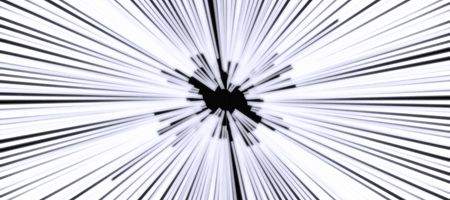Making the jump to lightspeed in the Millennium Falcon wouldn’t look anything like the way it’s depicted in the Star Wars movies, say University of Leicester students.

In the films, as hyperdrive is engaged, every star in the sky is seen to stretch before the characters’ eyes. In reality, though, it appears that the crew would actually see a central disc of bright light, as the Doppler effect would mean there was no sign of stars.
Doppler blue shift occurs when a source of electromagnetic radiation – including visible light – moves towards an observer, meaning that the wavelength of electromagnetic radiation is shortened.
Anmd this, says the team, means that from the Millennium Falcon crew’s point of view, the wavelength of the light from stars will decrease and ‘shift’ out of the visible spectrum into the X-ray range.
All they’d see is a central disc of bright light, as cosmic microwave background radiation is shifted into the visible spectrum.
“If the Millennium Falcon existed and really could travel that fast, sunglasses would certainly be advisable,” says student Riley Connors. “On top of this, the ship would need something to protect the crew from harmful X-ray radiation.”
The team also found that the intense X-rays from stars would push the ship back, causing it to slow down. Indeed, the pressure felt by the ship would be comparable to that at the bottom of the Pacific Ocean, they say.
“Perhaps Disney should take the physical implications of such high speed travel into account in their forthcoming films,” says student Katie Dexter.






